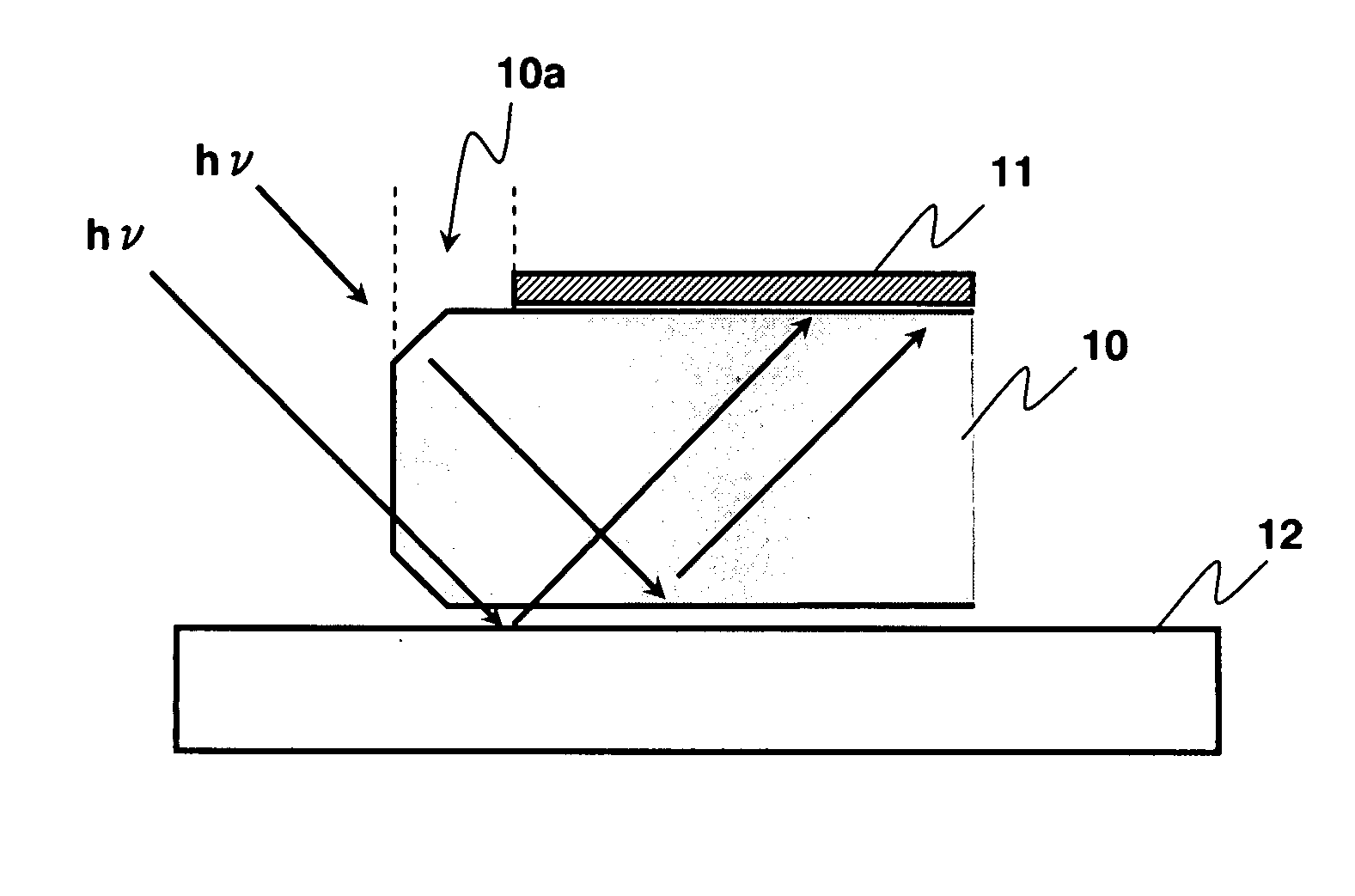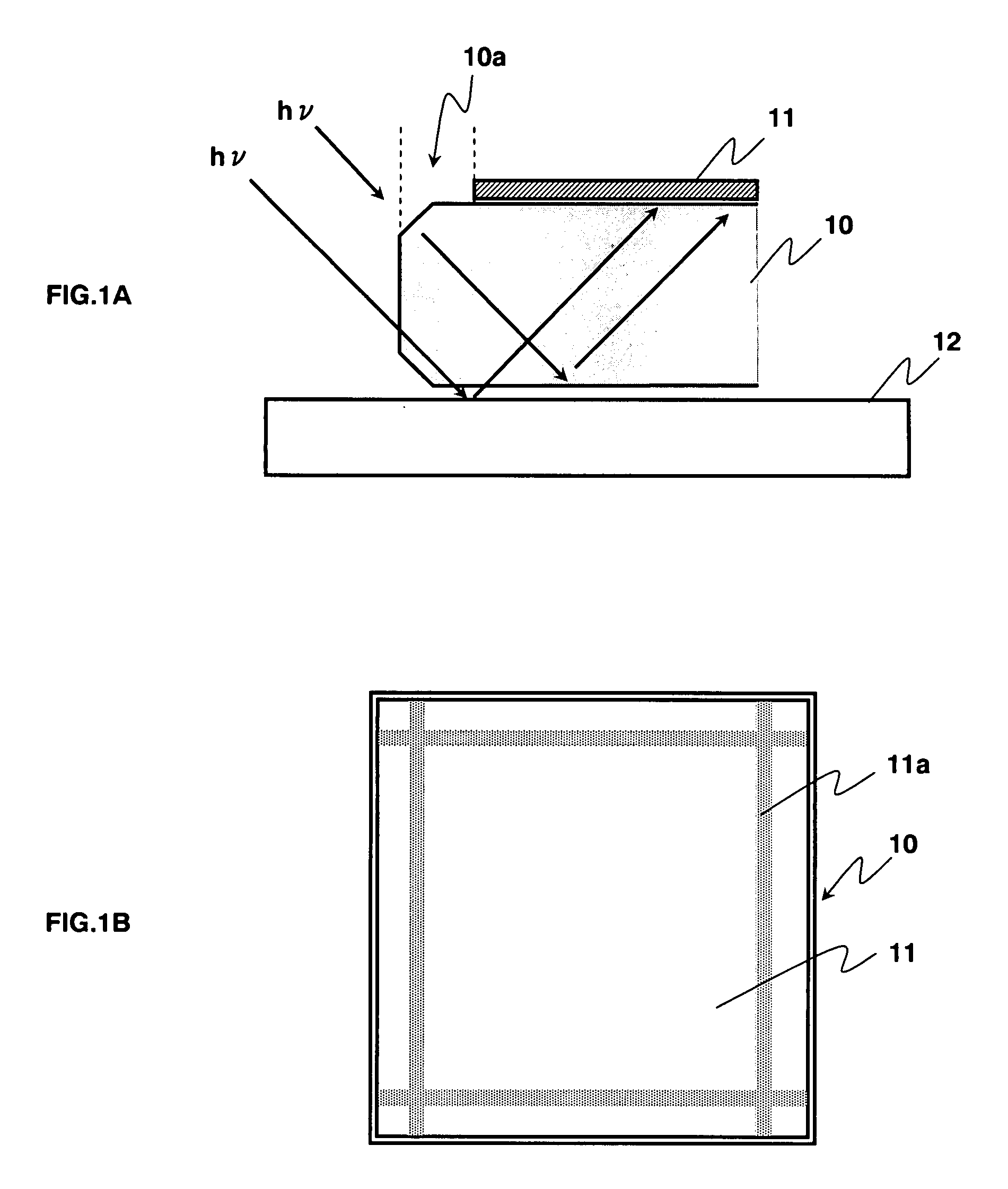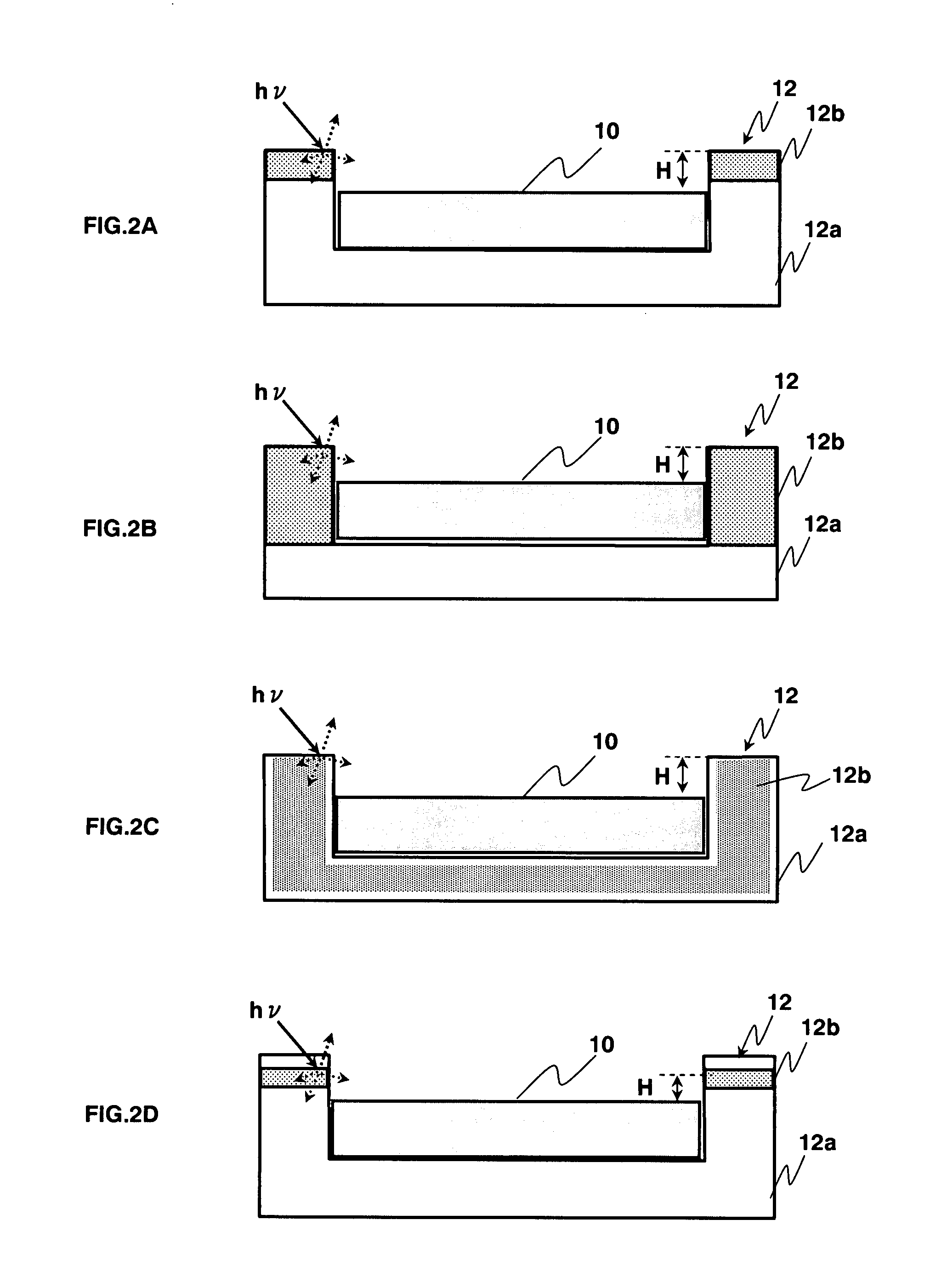Method of fabricating photomask blank
a technology of photomask and photoplate, which is applied in the field of method of fabricating photoplate, can solve the problems of reducing manufacturing yield, affecting manufacturing yield, and reducing depth of focus, and achieves the effect of reducing stress
- Summary
- Abstract
- Description
- Claims
- Application Information
AI Technical Summary
Benefits of technology
Problems solved by technology
Method used
Image
Examples
embodiment
[0048]First, a halftone phase shift film of MoSiON was formed on a square quartz substrate of 6 inches square to a film thickness of 700 Å by reactive DC sputtering. The phase shift film exhibited a phase difference of 1800 for exposure light from an ArF excimer laser (193 nm) and a transmittance equal to about 6% of that of a bare substrate. After being heated to 80° C., the substrate (that is, a substrate with a phase shift film) was placed on the susceptor with the excavated portion so that the phase shift film faces upward. The substrate was irradiated, from above, with light from the xenon flash lamp. At this time, susceptors of the type shown in FIG. 2C which have different excavation heights (that is, the heights of the sidewall portions of the susceptors) were prepared. Flash light irradiation was performed using each of the susceptors.
[0049]FIG. 3 is a diagram showing an in-plane variation in the transmittance of the halftone phase shift film observed after flash light irra...
PUM
| Property | Measurement | Unit |
|---|---|---|
| height | aaaaa | aaaaa |
| wavelength | aaaaa | aaaaa |
| transmittance | aaaaa | aaaaa |
Abstract
Description
Claims
Application Information
 Login to View More
Login to View More - R&D
- Intellectual Property
- Life Sciences
- Materials
- Tech Scout
- Unparalleled Data Quality
- Higher Quality Content
- 60% Fewer Hallucinations
Browse by: Latest US Patents, China's latest patents, Technical Efficacy Thesaurus, Application Domain, Technology Topic, Popular Technical Reports.
© 2025 PatSnap. All rights reserved.Legal|Privacy policy|Modern Slavery Act Transparency Statement|Sitemap|About US| Contact US: help@patsnap.com



